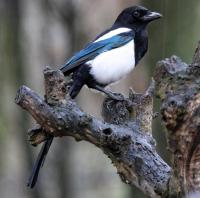- Home
- FAQs
- Customer Video Gallery
- Customer Photo Gallery
- Bird Facts
- Bird Food Blog
- Bird Information
- Feeding Advice
- Small Animal Information
- A to Z of Guinea Pigs
- A to Z of Hamsters
- A to Z of Rabbits
- Basic Care for Guinea Pigs
- Basic Care for Hamsters
- Basic Care for Rabbits
- Basic care for Chinchillas
- Basic care for Ferrets
- Basic care for Gerbils
- Basic care for Mice
- Basic care for Rats
- Buying a Healthy Small Animal
- Does your Reptile need a Licence
- Equipment for Ferrets
- Equipment for Hamsters
- Equipment for Mice
- Equipment for your Chinchilla
- Equipment for your Gerbil
- Equipment for your Guinea Pig
- Equipment for your Rabbit
- Keeping a House Rabbit
- Dog Information
- Cat Information
- Customer Information
- Fat Balls
- Suet Pellets
- Straights
- Seed Mixes
- Suet Treats
- Mealworms
- Bird Feeders
- My Account
Where to go Birdwatching
The United Kingdom has a large and varied amount of habitat types spread across our glorious country, from the Highlands in the north to the Brecklands of the south. In this Twootz guide to habitats we are going to give you an insight as to what species you may come across when visiting the various habitat types the country has on offer. We’ll look at 10 habitat types and give a small description of each, an example of a site within the habitat type and what birds you may come across if visiting.
As we live on an Island we may as well start with the sea……….
• Sea-watching.
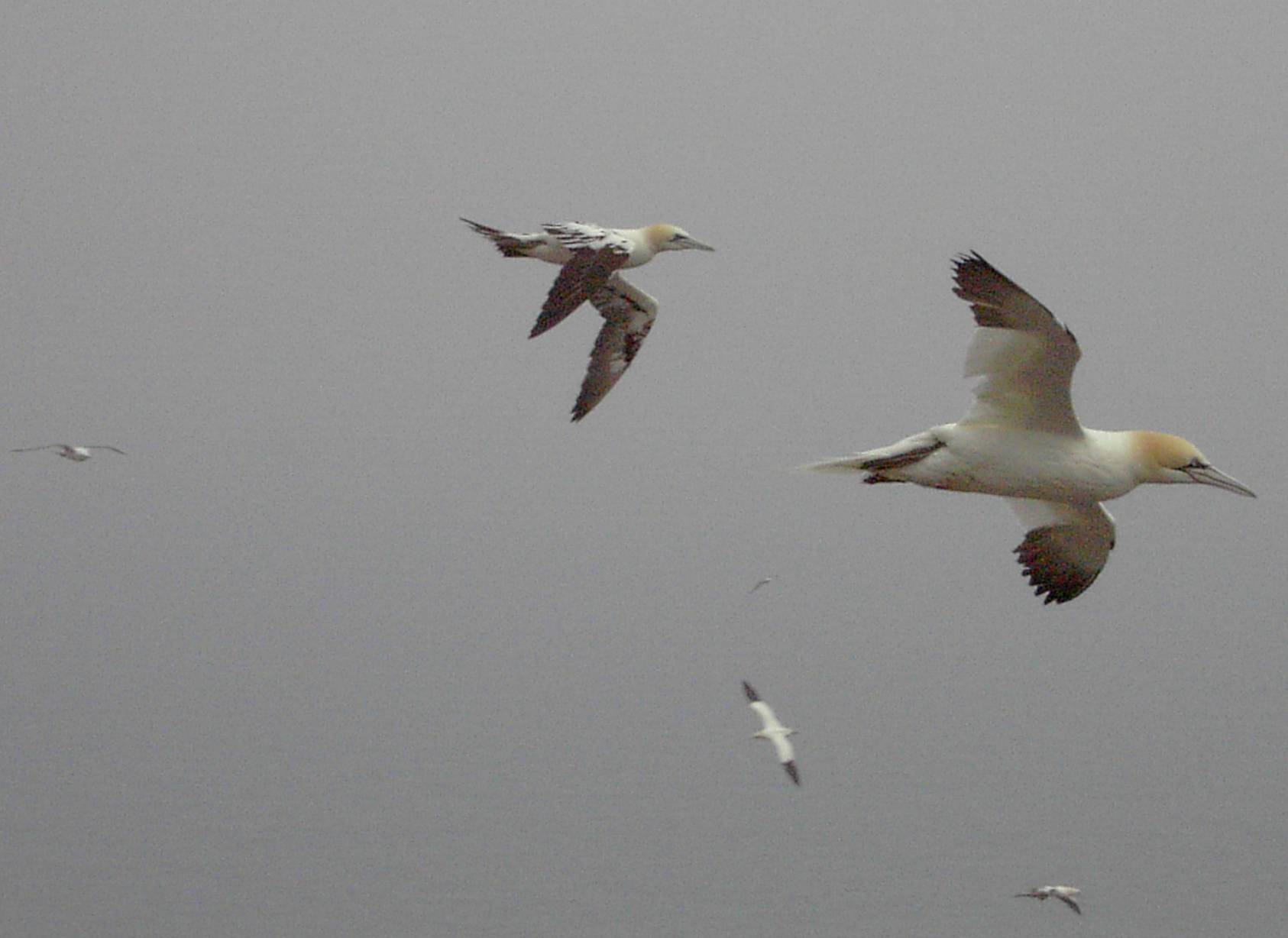 The sea is a great habitat, however Sea-watching is often a love or hate thing amongst birdwatchers. Ideal conditions for sea-watching often involve poor weather, high winds, squally showers and cold damp exposed conditions generally on headlands with very little shelter. Sea-watching can be very rewarding though, with birds being seen that you will not encounter inland.
The sea is a great habitat, however Sea-watching is often a love or hate thing amongst birdwatchers. Ideal conditions for sea-watching often involve poor weather, high winds, squally showers and cold damp exposed conditions generally on headlands with very little shelter. Sea-watching can be very rewarding though, with birds being seen that you will not encounter inland.
Good Sea-Watching sites include, Flamborough Head in Yorkshire, Porthgwarra, Pendeen and St Ives in Cornwall, South Stack on Anglesey. Any headland with an onshore wind should give results.
The Birds…….Auks (Puffin, Guillemot, Razorbills), Skuas, Shearwaters, Terns, Sea Duck, Petrels, Gannet, Gulls, Divers and Grebes.
Photo of Gannets looking out to sea from Bempton in Yorkshire.
• Coastal Marsh.
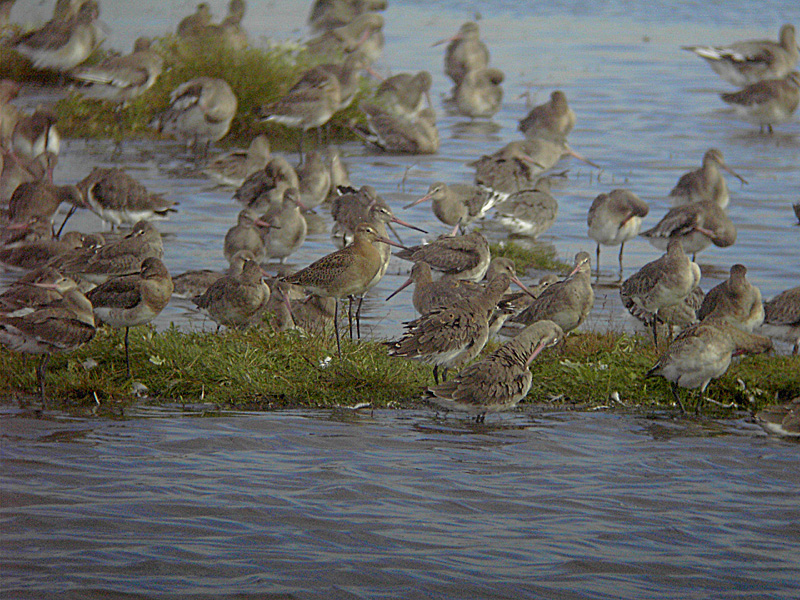 Fantastic habitat, salt water marshes can incorporate brackish pools, wader scrapes, mud flats, grazing marsh, occasional bushes and estuary mouths.
Fantastic habitat, salt water marshes can incorporate brackish pools, wader scrapes, mud flats, grazing marsh, occasional bushes and estuary mouths.
Good examples can be found along the North Norfolk Coast, the Ribble Marshes in Lancashire and Farlington Marshes in Hampshire, all coastal marshland will give good results.
The Birds…….Geese (winter), Wildfowl….Teal, Wigeon, Pintail, Gadwall, Shelduck, Shoveler. Waders…Lapwing, Golden Plover, Grey Plover, Oystercatcher, Redshank, Greenshank, Bar-tailed and Black-tailed Godwit, Curlew, Knot, Dunlin. Raptors may include Marsh and Hen Harrier, Short eared Owl, Peregrine, Merlin, Sparrowhawk and Kestrel.
Black-tailed Godwits, Marshside RSPB Reserve.Lancashire.
• Reedbeds
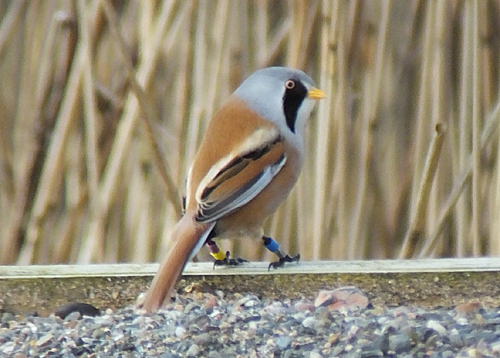 Reed beds are specialist habitats and provide a home for many specialist breeders.
Reed beds are specialist habitats and provide a home for many specialist breeders.
Good examples of this type of habitat are few and far between, the north Norfolk coast, Titchwell and Brancaster, Minsmere in Suffolk, Blacktoft Sands in Humberside and Leyton Moss in Lancashire all have superb reedbeds.
The Birds….Many specialist species may include, Bittern, Bearded tit, Marsh Harrier, Cetti’s Warbler, Savi’s Warbler (very rare), Water Rail, Spotted Crake (rare), Grey Heron, Egrets, Hobby can all be seen mixing with commoner wetland species.
Bearded Tit, Leighton Moss RSPB, Lancashire.
• Deciduous Woodland
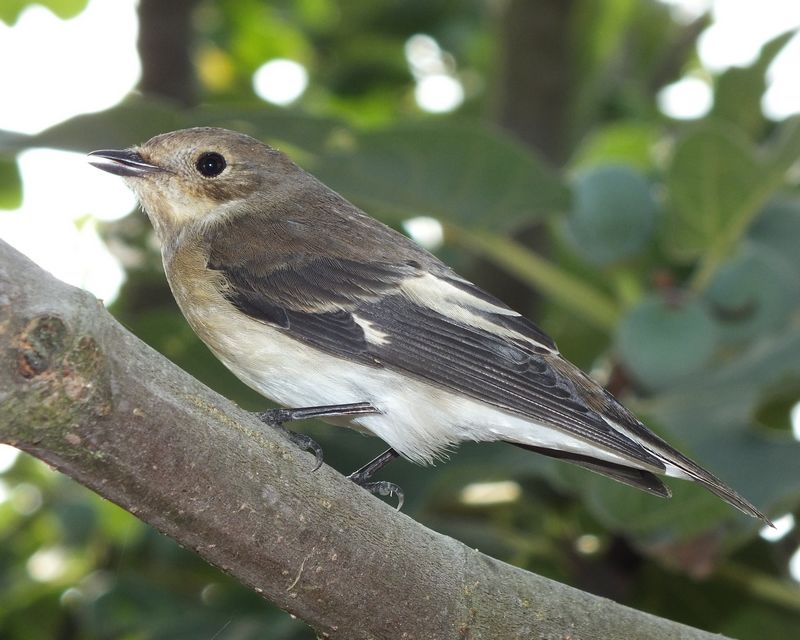 There are many pockets of deciduous woodland sprinkled around the country, they are characterised by trees such as Oak, Elm, Ash and Sycamore. There is usually good ground cover as well.
There are many pockets of deciduous woodland sprinkled around the country, they are characterised by trees such as Oak, Elm, Ash and Sycamore. There is usually good ground cover as well.
Many woodlands to choose from…The Peak District holds plenty of pockets, Coombes Valley in Staffordshire, Blean Woods RSPB nr Canterbury, Sherwood Forest in Nott’s and Dinas and Gwenffrwd RSPB in Mid Wales are superb examples.
The Birds……All three woodpeckers are possible, Nuthatch, Hawfinch, Treecreeper, Redstart (summer) Pied Flycatcher (summer) Spotted Flycatcher (summer) Wood Warbler (summer) Buzzard, Goshawk, Sparrowhawk, Tree Pipit all alongside commoner woodland species.
Pied Flycatcher, Lancashire.
• Pine Plantations
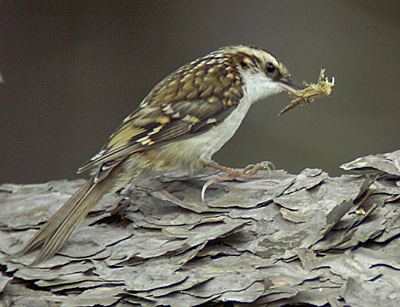 Manmade Pine plantations are a common site around the coast these days, they are not the best habitat but they do attract some species that are interesting.
Manmade Pine plantations are a common site around the coast these days, they are not the best habitat but they do attract some species that are interesting.
Holkham and Wells in Norfolk and The Sefton Coast in Merseyside are good examples.
The Birds…Crossbill, Siskin, Goldcrest, Buzzard, Treecreeper, Nuthatch, Redpoll and in summer, various common warblers.
Treecreeper, Formby Pine woods, National Trust Reserve, Lancashire.
• The Caledonian Pine Forests and Highlands of Scotland.
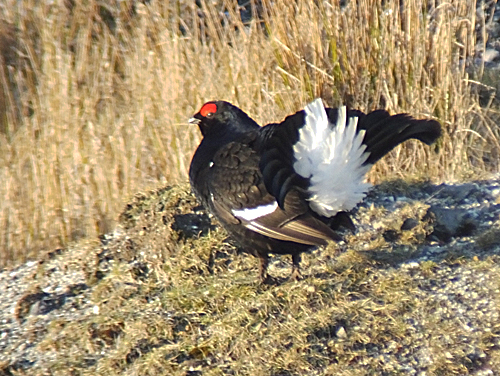 The highlands of Scotland hold many specialist birds, from the ancient forest to the highest peaks, we’ll cover this area as one. The area around Aviemore is a great place to base yourself and is within easy distance of many of the top birding spots.
The highlands of Scotland hold many specialist birds, from the ancient forest to the highest peaks, we’ll cover this area as one. The area around Aviemore is a great place to base yourself and is within easy distance of many of the top birding spots.
The Birds….Crested Tit, Capercailie, Black Grouse, Dotterel, Crossbill, Scottish Crossbill (our only endemic bird) Ptarmigan, Slavonian Grebe, Goldeneye, Golden Eagle, Osprey, Dipper, Grey Wagtail, Red Grouse, Snow Bunting and Hen Harrier are a good examples of what can be seen throughout the seasons.
Black Grouse
• Reservoirs, Gravel Pits and inland Lakes.
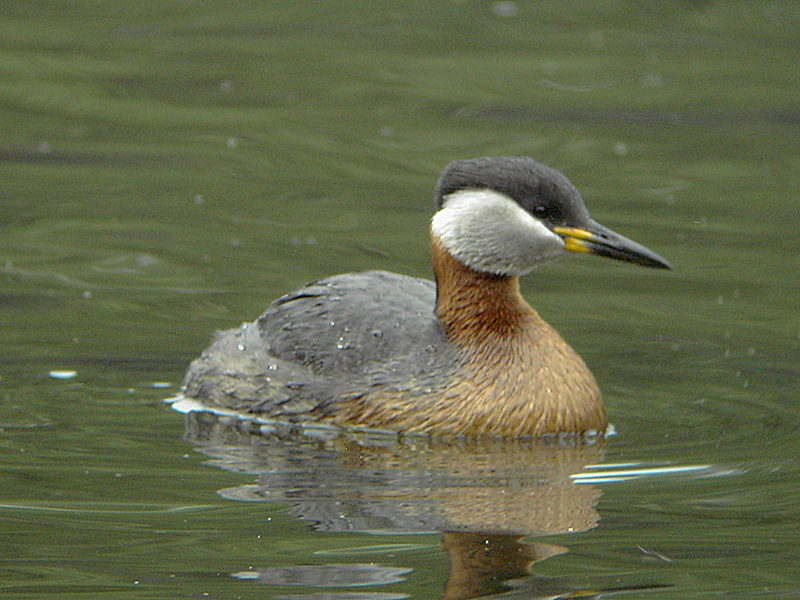 Artificial lakes and reservoirs are often very good for bird watching, they provide bodies of water that generally wouldn’t exist if not helped along by man.
Artificial lakes and reservoirs are often very good for bird watching, they provide bodies of water that generally wouldn’t exist if not helped along by man.
The Midlands hold a huge amount of this type of habitat with perhaps Rutland Water (home of the Bird fair) being most well-known. Other good sites include Chase Water, Blithfield Reservoir, Draycot Water, Pitsford Reservoir and Grafham Water. Winter tends to hold better birding with winter duck being the main attractions.
The Birds…..Occasional inland Divers, Grebes, Seaduck….Smew, Red crested Pochard, Osprey (summer) Waders such as Little-ringed Plover. Common wildfowl and Geese, Gulls and Terns.
Red-necked Grebe, Knowsley, Merseyside.
• Farmland / Moss land
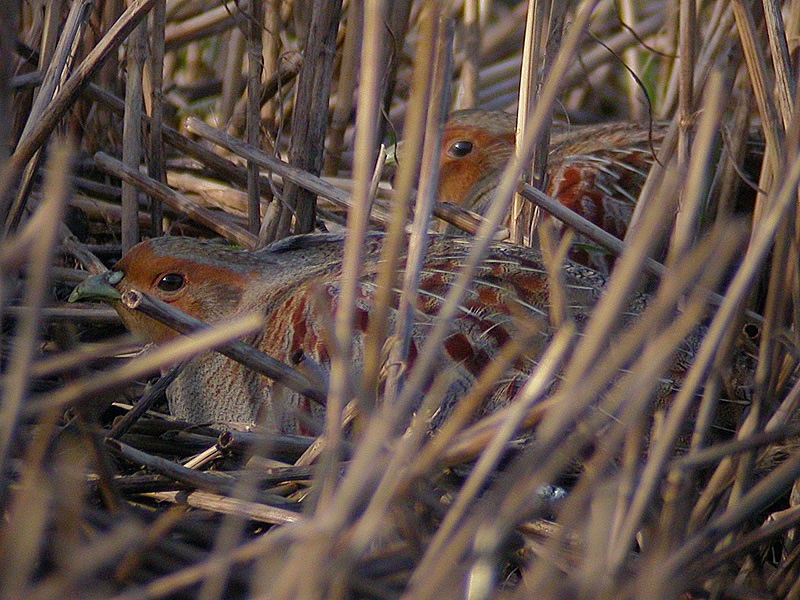 The UK has a vast amount of farmland available for bird watching, unfortunately farming practices have changed over the years and many ‘typical’ features such as hedgerows have been reduced dramatically. However good birding can still be had.
The UK has a vast amount of farmland available for bird watching, unfortunately farming practices have changed over the years and many ‘typical’ features such as hedgerows have been reduced dramatically. However good birding can still be had.
The Birds….Skylark, Corn Bunting, Yellowhammer, Cirl Bunting, Grey Partridge, Red Legged Partridge, Red Kite, Buzzard, Tree Sparrow, Linnet, Yellow Wagtail, Lapwings, Oystercatcher, Turtle Dove, Barn Owl, Long eared Owl, Little Owl along with Meadow Pipits and the commoner warblers.
Grey Partridge, a declining species, Formby Moss, Lancashire.
• Heathland, New forest, Breckland
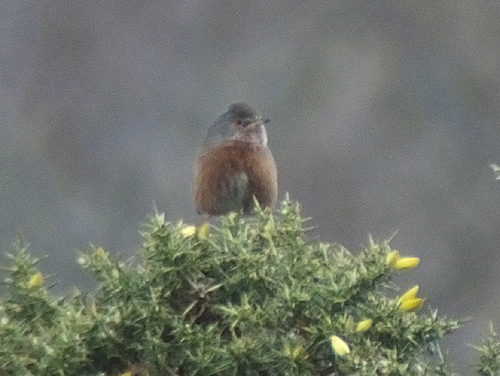 Similar habitats across different Counties, The Brecks in Norfolk/Suffolk, New Forest in Hampshire and general heathland across many Counties all provide similar habitats, namely, open heath / farm land, mixed scrub, deciduous copses and pine belts.
Similar habitats across different Counties, The Brecks in Norfolk/Suffolk, New Forest in Hampshire and general heathland across many Counties all provide similar habitats, namely, open heath / farm land, mixed scrub, deciduous copses and pine belts.
The Birds….Speciality species include, Honey Buzzard, Golden Oriole, Stone Curlew, Dartford warbler, Woodlark, Tree Pipit, Nightjar, Hobby and Goshawk as well as commoner species.
Dartford Warbler, Wales.
• Migration Watch Points, Rarity Hotspots.
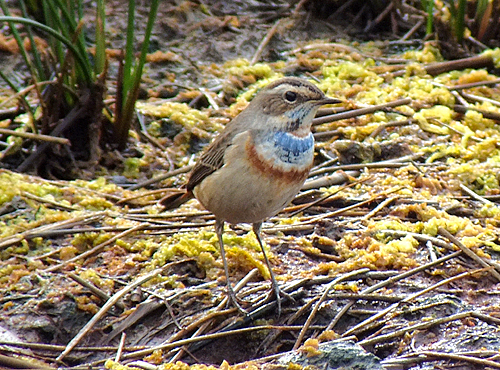 There are many rarity hotspots around the country, they are primarily good in Spring and Autumn, migration time, and a well planned visit could result in a fabulous day out. Normally not nationally important as bird breeding areas they are magnets to migrating birds as they are often Islands and headlands, first landfall for migrants flying in from the continents.
There are many rarity hotspots around the country, they are primarily good in Spring and Autumn, migration time, and a well planned visit could result in a fabulous day out. Normally not nationally important as bird breeding areas they are magnets to migrating birds as they are often Islands and headlands, first landfall for migrants flying in from the continents.
Some well-known examples. The Shetland, Orkney and Western Isles of Scotland, The Scilly Isles off Cornwall. Spurn Point, Filey and Flamborough Head in Yorkshire, Gibraltar Point in Lincolnshire, Dungeness in Kent, Portland Bill in Dorset and Prawle point in Devon are all excellent, there are many many more worth visiting.
The Birds….Always unpredictable but there are some rare migrants that are almost annual at many of these sites…….Red backed and woodchat Shrike, Bluethroat, Melodious and Icterine Warbler, Richards, Tawny and Red Throated Pipit, Little and Rustic Bunting, Yellow-browed, Pallas’s and Raddes Warbler, Firecrest, Red breasted Flycatcher, Bee Eater, Barred Warbler along with good numbers of commoner migrants such as Pied Flycatcher, Redstart, Ring Ouzel. These hotspots often hold birds far rarer than the ones named above, this is just a selection of what could be expected.
Bluethroat, photographed on the Isles of Scilly.
Happy Bird watching.
As we live on an Island we may as well start with the sea……….
• Sea-watching.
 The sea is a great habitat, however Sea-watching is often a love or hate thing amongst birdwatchers. Ideal conditions for sea-watching often involve poor weather, high winds, squally showers and cold damp exposed conditions generally on headlands with very little shelter. Sea-watching can be very rewarding though, with birds being seen that you will not encounter inland.
The sea is a great habitat, however Sea-watching is often a love or hate thing amongst birdwatchers. Ideal conditions for sea-watching often involve poor weather, high winds, squally showers and cold damp exposed conditions generally on headlands with very little shelter. Sea-watching can be very rewarding though, with birds being seen that you will not encounter inland.Good Sea-Watching sites include, Flamborough Head in Yorkshire, Porthgwarra, Pendeen and St Ives in Cornwall, South Stack on Anglesey. Any headland with an onshore wind should give results.
The Birds…….Auks (Puffin, Guillemot, Razorbills), Skuas, Shearwaters, Terns, Sea Duck, Petrels, Gannet, Gulls, Divers and Grebes.
Photo of Gannets looking out to sea from Bempton in Yorkshire.
• Coastal Marsh.
 Fantastic habitat, salt water marshes can incorporate brackish pools, wader scrapes, mud flats, grazing marsh, occasional bushes and estuary mouths.
Fantastic habitat, salt water marshes can incorporate brackish pools, wader scrapes, mud flats, grazing marsh, occasional bushes and estuary mouths.Good examples can be found along the North Norfolk Coast, the Ribble Marshes in Lancashire and Farlington Marshes in Hampshire, all coastal marshland will give good results.
The Birds…….Geese (winter), Wildfowl….Teal, Wigeon, Pintail, Gadwall, Shelduck, Shoveler. Waders…Lapwing, Golden Plover, Grey Plover, Oystercatcher, Redshank, Greenshank, Bar-tailed and Black-tailed Godwit, Curlew, Knot, Dunlin. Raptors may include Marsh and Hen Harrier, Short eared Owl, Peregrine, Merlin, Sparrowhawk and Kestrel.
Black-tailed Godwits, Marshside RSPB Reserve.Lancashire.
• Reedbeds
 Reed beds are specialist habitats and provide a home for many specialist breeders.
Reed beds are specialist habitats and provide a home for many specialist breeders.Good examples of this type of habitat are few and far between, the north Norfolk coast, Titchwell and Brancaster, Minsmere in Suffolk, Blacktoft Sands in Humberside and Leyton Moss in Lancashire all have superb reedbeds.
The Birds….Many specialist species may include, Bittern, Bearded tit, Marsh Harrier, Cetti’s Warbler, Savi’s Warbler (very rare), Water Rail, Spotted Crake (rare), Grey Heron, Egrets, Hobby can all be seen mixing with commoner wetland species.
Bearded Tit, Leighton Moss RSPB, Lancashire.
• Deciduous Woodland
 There are many pockets of deciduous woodland sprinkled around the country, they are characterised by trees such as Oak, Elm, Ash and Sycamore. There is usually good ground cover as well.
There are many pockets of deciduous woodland sprinkled around the country, they are characterised by trees such as Oak, Elm, Ash and Sycamore. There is usually good ground cover as well. Many woodlands to choose from…The Peak District holds plenty of pockets, Coombes Valley in Staffordshire, Blean Woods RSPB nr Canterbury, Sherwood Forest in Nott’s and Dinas and Gwenffrwd RSPB in Mid Wales are superb examples.
The Birds……All three woodpeckers are possible, Nuthatch, Hawfinch, Treecreeper, Redstart (summer) Pied Flycatcher (summer) Spotted Flycatcher (summer) Wood Warbler (summer) Buzzard, Goshawk, Sparrowhawk, Tree Pipit all alongside commoner woodland species.
Pied Flycatcher, Lancashire.
• Pine Plantations
 Manmade Pine plantations are a common site around the coast these days, they are not the best habitat but they do attract some species that are interesting.
Manmade Pine plantations are a common site around the coast these days, they are not the best habitat but they do attract some species that are interesting.Holkham and Wells in Norfolk and The Sefton Coast in Merseyside are good examples.
The Birds…Crossbill, Siskin, Goldcrest, Buzzard, Treecreeper, Nuthatch, Redpoll and in summer, various common warblers.
Treecreeper, Formby Pine woods, National Trust Reserve, Lancashire.
• The Caledonian Pine Forests and Highlands of Scotland.
 The highlands of Scotland hold many specialist birds, from the ancient forest to the highest peaks, we’ll cover this area as one. The area around Aviemore is a great place to base yourself and is within easy distance of many of the top birding spots.
The highlands of Scotland hold many specialist birds, from the ancient forest to the highest peaks, we’ll cover this area as one. The area around Aviemore is a great place to base yourself and is within easy distance of many of the top birding spots.The Birds….Crested Tit, Capercailie, Black Grouse, Dotterel, Crossbill, Scottish Crossbill (our only endemic bird) Ptarmigan, Slavonian Grebe, Goldeneye, Golden Eagle, Osprey, Dipper, Grey Wagtail, Red Grouse, Snow Bunting and Hen Harrier are a good examples of what can be seen throughout the seasons.
Black Grouse
• Reservoirs, Gravel Pits and inland Lakes.
 Artificial lakes and reservoirs are often very good for bird watching, they provide bodies of water that generally wouldn’t exist if not helped along by man.
Artificial lakes and reservoirs are often very good for bird watching, they provide bodies of water that generally wouldn’t exist if not helped along by man.The Midlands hold a huge amount of this type of habitat with perhaps Rutland Water (home of the Bird fair) being most well-known. Other good sites include Chase Water, Blithfield Reservoir, Draycot Water, Pitsford Reservoir and Grafham Water. Winter tends to hold better birding with winter duck being the main attractions.
The Birds…..Occasional inland Divers, Grebes, Seaduck….Smew, Red crested Pochard, Osprey (summer) Waders such as Little-ringed Plover. Common wildfowl and Geese, Gulls and Terns.
Red-necked Grebe, Knowsley, Merseyside.
• Farmland / Moss land
 The UK has a vast amount of farmland available for bird watching, unfortunately farming practices have changed over the years and many ‘typical’ features such as hedgerows have been reduced dramatically. However good birding can still be had.
The UK has a vast amount of farmland available for bird watching, unfortunately farming practices have changed over the years and many ‘typical’ features such as hedgerows have been reduced dramatically. However good birding can still be had.The Birds….Skylark, Corn Bunting, Yellowhammer, Cirl Bunting, Grey Partridge, Red Legged Partridge, Red Kite, Buzzard, Tree Sparrow, Linnet, Yellow Wagtail, Lapwings, Oystercatcher, Turtle Dove, Barn Owl, Long eared Owl, Little Owl along with Meadow Pipits and the commoner warblers.
Grey Partridge, a declining species, Formby Moss, Lancashire.
• Heathland, New forest, Breckland
 Similar habitats across different Counties, The Brecks in Norfolk/Suffolk, New Forest in Hampshire and general heathland across many Counties all provide similar habitats, namely, open heath / farm land, mixed scrub, deciduous copses and pine belts.
Similar habitats across different Counties, The Brecks in Norfolk/Suffolk, New Forest in Hampshire and general heathland across many Counties all provide similar habitats, namely, open heath / farm land, mixed scrub, deciduous copses and pine belts.The Birds….Speciality species include, Honey Buzzard, Golden Oriole, Stone Curlew, Dartford warbler, Woodlark, Tree Pipit, Nightjar, Hobby and Goshawk as well as commoner species.
Dartford Warbler, Wales.
• Migration Watch Points, Rarity Hotspots.
 There are many rarity hotspots around the country, they are primarily good in Spring and Autumn, migration time, and a well planned visit could result in a fabulous day out. Normally not nationally important as bird breeding areas they are magnets to migrating birds as they are often Islands and headlands, first landfall for migrants flying in from the continents.
There are many rarity hotspots around the country, they are primarily good in Spring and Autumn, migration time, and a well planned visit could result in a fabulous day out. Normally not nationally important as bird breeding areas they are magnets to migrating birds as they are often Islands and headlands, first landfall for migrants flying in from the continents.Some well-known examples. The Shetland, Orkney and Western Isles of Scotland, The Scilly Isles off Cornwall. Spurn Point, Filey and Flamborough Head in Yorkshire, Gibraltar Point in Lincolnshire, Dungeness in Kent, Portland Bill in Dorset and Prawle point in Devon are all excellent, there are many many more worth visiting.
The Birds….Always unpredictable but there are some rare migrants that are almost annual at many of these sites…….Red backed and woodchat Shrike, Bluethroat, Melodious and Icterine Warbler, Richards, Tawny and Red Throated Pipit, Little and Rustic Bunting, Yellow-browed, Pallas’s and Raddes Warbler, Firecrest, Red breasted Flycatcher, Bee Eater, Barred Warbler along with good numbers of commoner migrants such as Pied Flycatcher, Redstart, Ring Ouzel. These hotspots often hold birds far rarer than the ones named above, this is just a selection of what could be expected.
Bluethroat, photographed on the Isles of Scilly.
Happy Bird watching.




